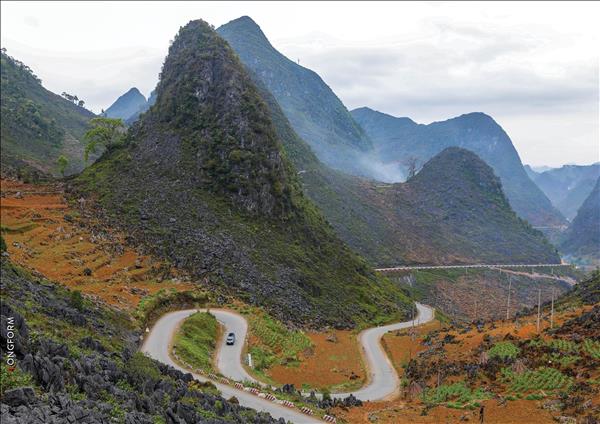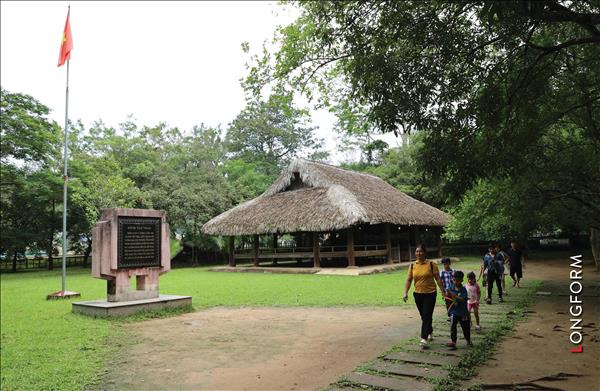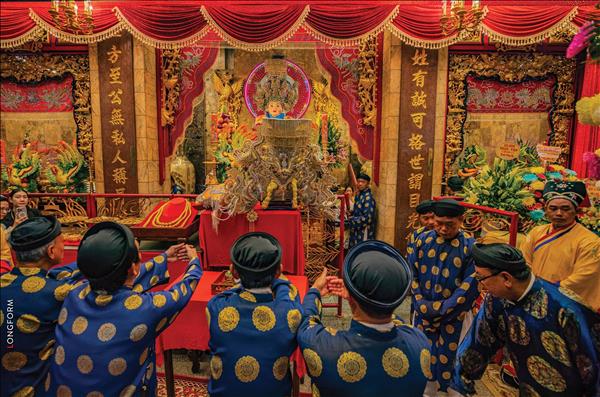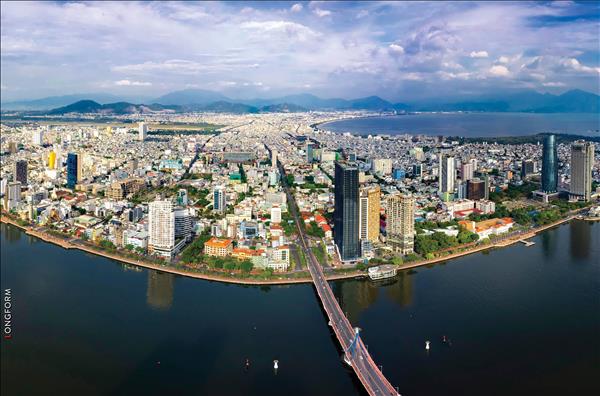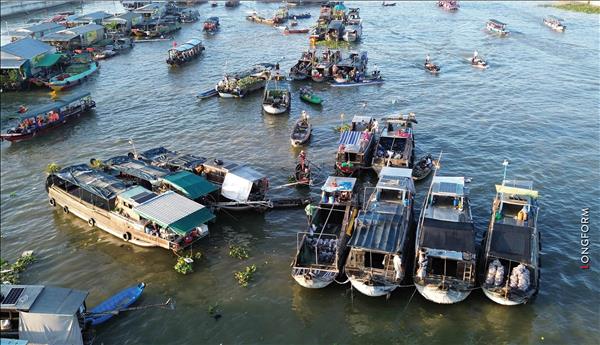Pilgrimage to the sacred land
At the beginning of the year, we made a pilgrimage to Huong (perfume) pagoda in Hanoi’s My Duc district, the sacred land believed to be where the Bodhisattva of Compassion reached the peak of the Way in Buddhism.
Huong pagoda is the best-known religion tourism complex in north Vietnam, boasting many Buddhist temples and shrines.
Out of the numerous pagodas and temples at Huong pagoda relic complex, every pilgrim is supposed to visit Trinh temple, Thien Tru pagoda and Huong Tich cave.
Trinh temple is the first destination in the journey exploring Huong pagoda. Thien Tru, which was built during the dynasty of King Le Thanh Tong (1460-1497), is the main pagoda in the Huong pagoda relic complex. Huong Tich is regarded as the most beautiful cave in Vietnam with natural stalactites in gorgeous shapes.
One can take a boat trip to Trinh temple and then to Tro wharf to climb the mountain to reach Thien Tru pagoda and Huong cave. Visitors can also choose to take a cable car to reach Huong Tich cave. Going this way, they can enjoy the picturesque and poetic scenery of Huong Son mountains and forests.
Huong pagoda festival is the longest in Vietnam, lasting from the first through the third lunar months, entertaining millions of local and foreign visitors.
Tam Chuc pagoda, the venue of Vesak 2019
Called “Ha Long Bay on land”, Tam Chuc pagoda tourist and cultural complex in Kim Bang district, Ha Nam province is recognized as a national tourist site. It is selected to host United Nations Day of Vesak 2019 which will take place from May 12-14.
With an area of 5,000 hectares, Tam Chuc pagoda boasts 12,000 stone pictures portraying the tales of Buddha, and a garden of 1,000 giant stone pillars which is the world’s largest garden of Buddhist prayer stone pillars.
On the peak of That Tinh mountain is Ngoc pagoda from which one can see the beautiful scenery of the entire Tam Chuc complex.
With convenient transport links between Hanoi, Ha Nam and Ninh Binh, Tam Chuc is the center connecting Huong and Bai Dinh pagodas which together form a golden triangle for spiritual tourism in north Vietnam.
Picturesque landscape of Trang An - Bai Dinh
About one thousand years ago, Ninh Binh was the imperial capital during the Dinh, Tien Le and Ly dynasties. In 1136, when monk Nguyen Minh Khong went to look for medicinal herbs to cure King Le Thanh Tong, he discovered a cave on Dinh mountain and chose this place to build a pagoda for practicing Buddhism. At present, relics of the development of ancient Buddhism are kept at Bai Dinh pagoda.
In 2003, old Bai Dinh pagoda was upgraded by the Xuan Truong enterprise into a big pagoda complex on an area of over 100 hectares.
The upgraded pagoda, which still have the traditional traits of a Buddhist temple, is designed to create a tranquil space which is harmoniously surrounded by valleys, rock mountains, lakes and trees.
Located in the Trang An Landscape Complex, Bai Dinh pagoda hosted the United Nations Day of Vesak in 2008 and 2014, an event attended by thousands of representatives of Buddhist delegations from more than 100 countries all over the world./.
At the beginning of the year, we made a pilgrimage to Huong (perfume) pagoda in Hanoi’s My Duc district, the sacred land believed to be where the Bodhisattva of Compassion reached the peak of the Way in Buddhism.
Huong pagoda is the best-known religion tourism complex in north Vietnam, boasting many Buddhist temples and shrines.
|
Taking a boat trip on Yen spring to reach Thien Tru pagoda. Photo: Tat Son / VNP Entrance to Thien Tru pagoda. Photo: Tat Son / VNP Visitors can take a cable car to reach Huong Tich cave. Photo: Tat Son / VNP In Spring, pilgrims flock to Huong Tich cave to pray for a year of peace and happiness. Photo: Tat Son / VNP |
Out of the numerous pagodas and temples at Huong pagoda relic complex, every pilgrim is supposed to visit Trinh temple, Thien Tru pagoda and Huong Tich cave.
Trinh temple is the first destination in the journey exploring Huong pagoda. Thien Tru, which was built during the dynasty of King Le Thanh Tong (1460-1497), is the main pagoda in the Huong pagoda relic complex. Huong Tich is regarded as the most beautiful cave in Vietnam with natural stalactites in gorgeous shapes.
One can take a boat trip to Trinh temple and then to Tro wharf to climb the mountain to reach Thien Tru pagoda and Huong cave. Visitors can also choose to take a cable car to reach Huong Tich cave. Going this way, they can enjoy the picturesque and poetic scenery of Huong Son mountains and forests.
Huong pagoda festival is the longest in Vietnam, lasting from the first through the third lunar months, entertaining millions of local and foreign visitors.
|
“Monk Nguyen Minh Khong of the Ly dynasty (1066-1141) went from Ninh Binh province to My Duc, Hanoi, to look for medicinal herbs. On his way, he built pagodas dedicated to Buddha in places where beautiful caves were located. Today, the Buddhist Sangha of Vietnam and the Xuan Truong enterprise have built a 100km Buddhist tourist route called the Path of Buddhism. This route connects the three relics and landscapes of Huong, Tam Chuc and Bai Dinh pagodas according to the journey of pilgrimage of monk Nguyen Minh Khong.”
Most Venerable Thich Minh Quang, Member of the Executive Council of Buddhist Sangha of Vietnam
|
Tam Chuc pagoda, the venue of Vesak 2019
Called “Ha Long Bay on land”, Tam Chuc pagoda tourist and cultural complex in Kim Bang district, Ha Nam province is recognized as a national tourist site. It is selected to host United Nations Day of Vesak 2019 which will take place from May 12-14.
With an area of 5,000 hectares, Tam Chuc pagoda boasts 12,000 stone pictures portraying the tales of Buddha, and a garden of 1,000 giant stone pillars which is the world’s largest garden of Buddhist prayer stone pillars.
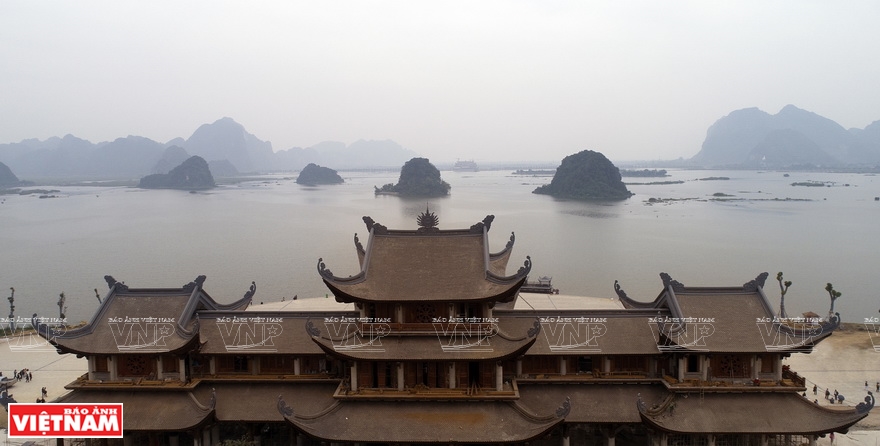 Surrounded by rock mountains and a lake, Tam Chuc is regarded as a Ha Long Bay on land. Photo: Tat Son / VNP 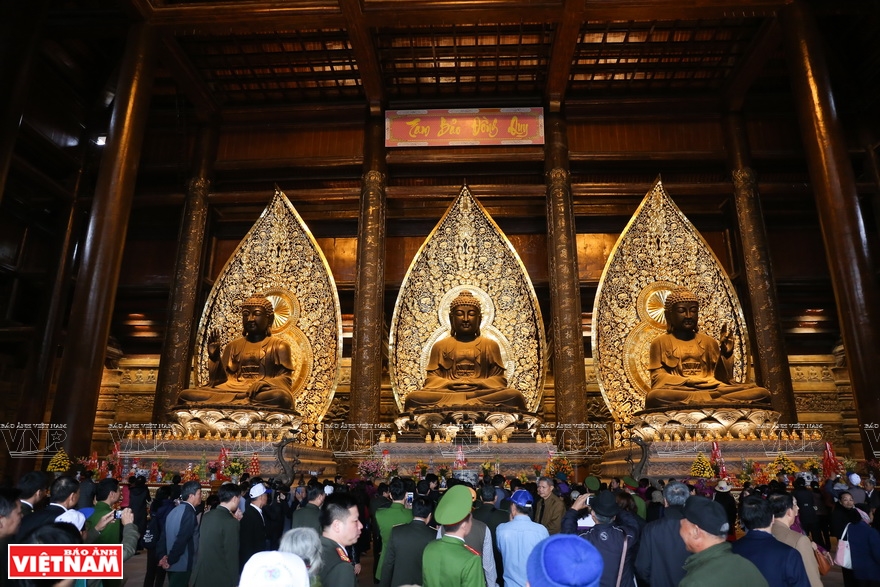 With an area of 5,500m2, Tam The temple in Tam Chuc pagoda can accommodate 5,000 pilgrims. Photo: Khanh Long / VNP 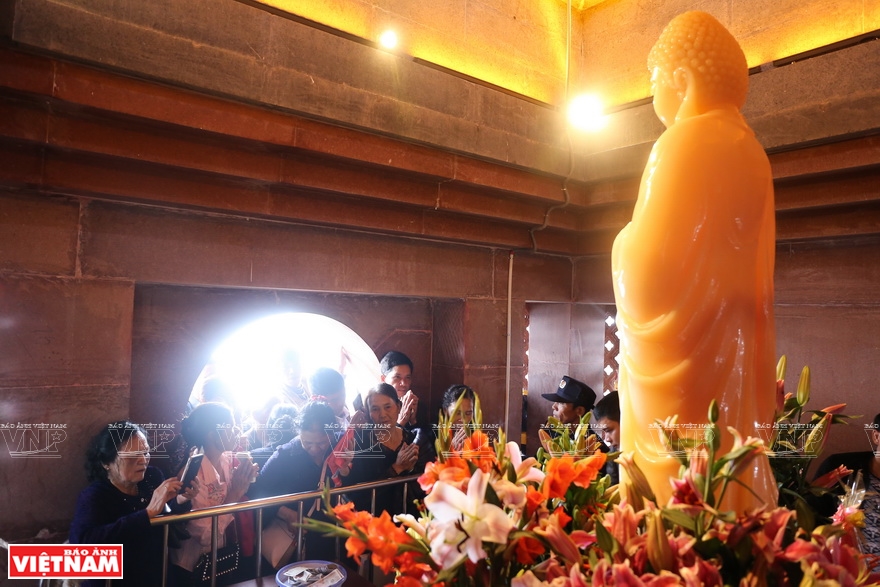
Hundreds of Buddhist followers pay tribute to a Buddha statue made from precious stone in Ngoc pagoda in Tam Chuc. Photo: Khanh Long / VNP
 Beautifully carved sculptures telling the tales of Buddha in Tam Chuc pagoda were created by craftspeople from Vietnam, India and Indonesia. Photo: Khanh Long / VNP 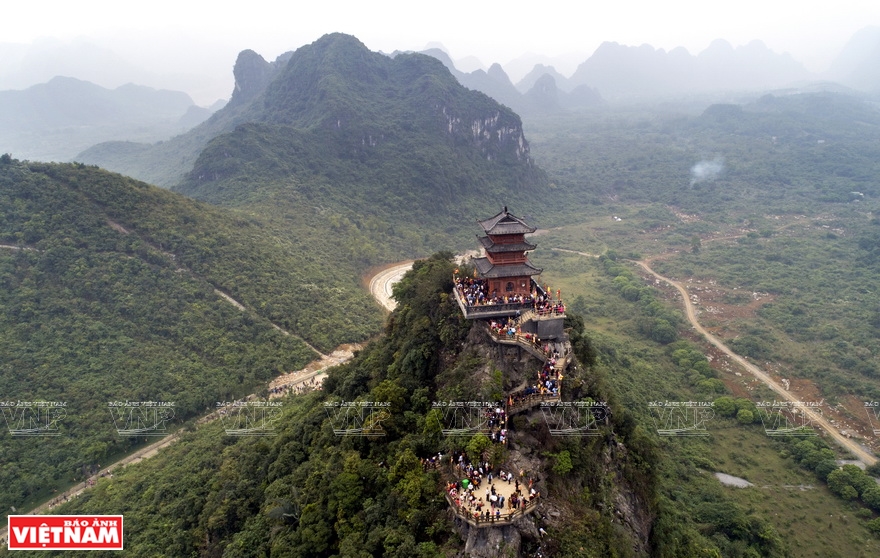 Ngoc Pagoda seen from above. Photo: Tat Son / VNP |
On the peak of That Tinh mountain is Ngoc pagoda from which one can see the beautiful scenery of the entire Tam Chuc complex.
With convenient transport links between Hanoi, Ha Nam and Ninh Binh, Tam Chuc is the center connecting Huong and Bai Dinh pagodas which together form a golden triangle for spiritual tourism in north Vietnam.
| “Three Destinations-One Path” is the name of the route starting from Huong pagoda through Tam Chuc pagoda to Bai Dinh pagoda. |
Picturesque landscape of Trang An - Bai Dinh
About one thousand years ago, Ninh Binh was the imperial capital during the Dinh, Tien Le and Ly dynasties. In 1136, when monk Nguyen Minh Khong went to look for medicinal herbs to cure King Le Thanh Tong, he discovered a cave on Dinh mountain and chose this place to build a pagoda for practicing Buddhism. At present, relics of the development of ancient Buddhism are kept at Bai Dinh pagoda.
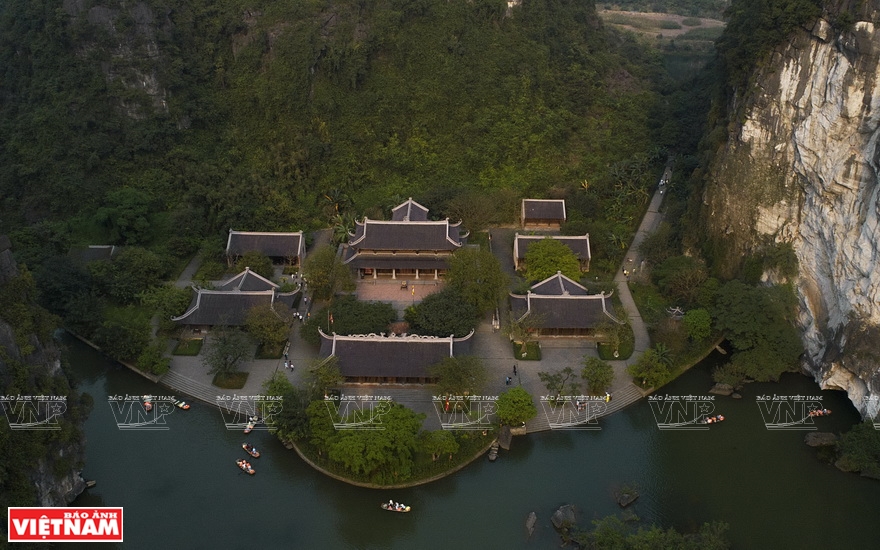 Trang An Landscape Complex is recognized as a world natural heritage by UNESCO. Photo: Tat Son / VNP 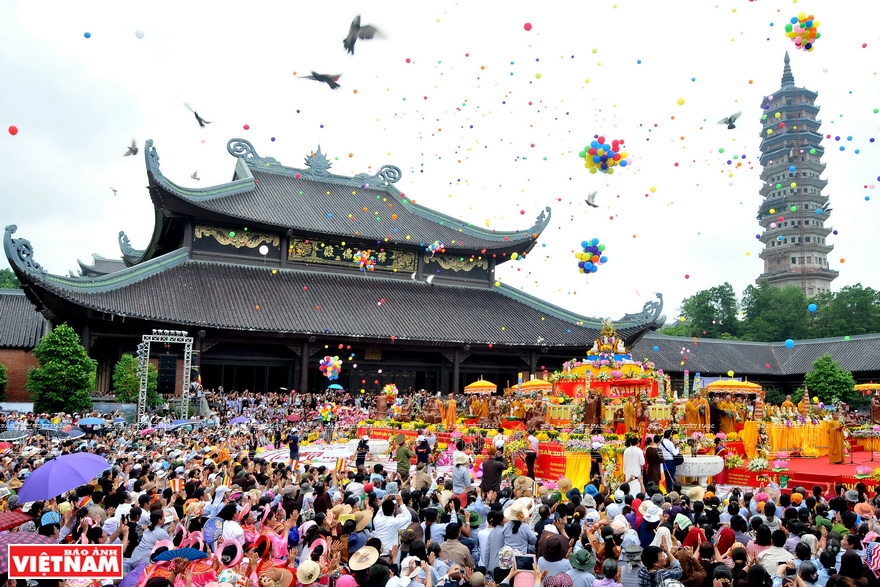 United Nations Day of Vesak 2014 was held at Bai Dinh pagoda in Ninh Binh province. Photo: Luong Xuan Lam 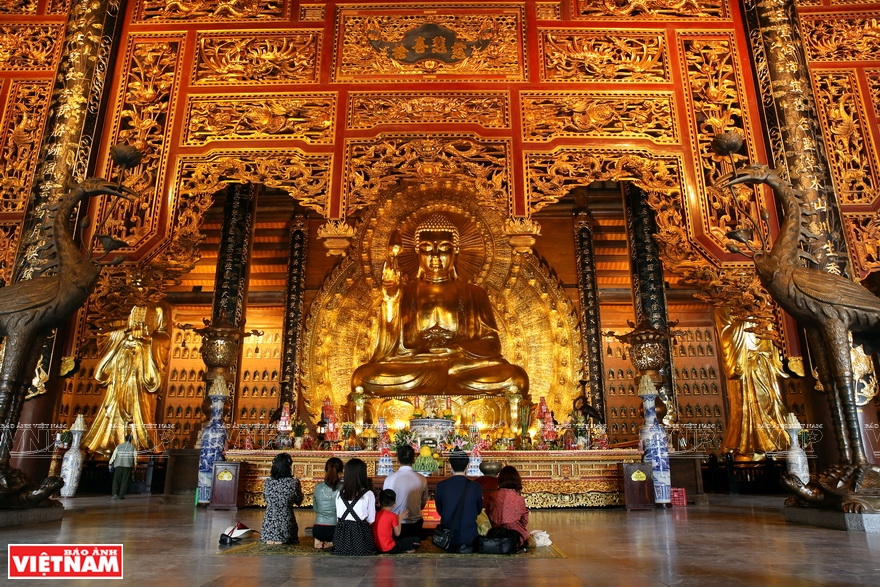 Paying homage to Buddha at Bai Dinh pagoda. Photo: Khanh Long / VNP 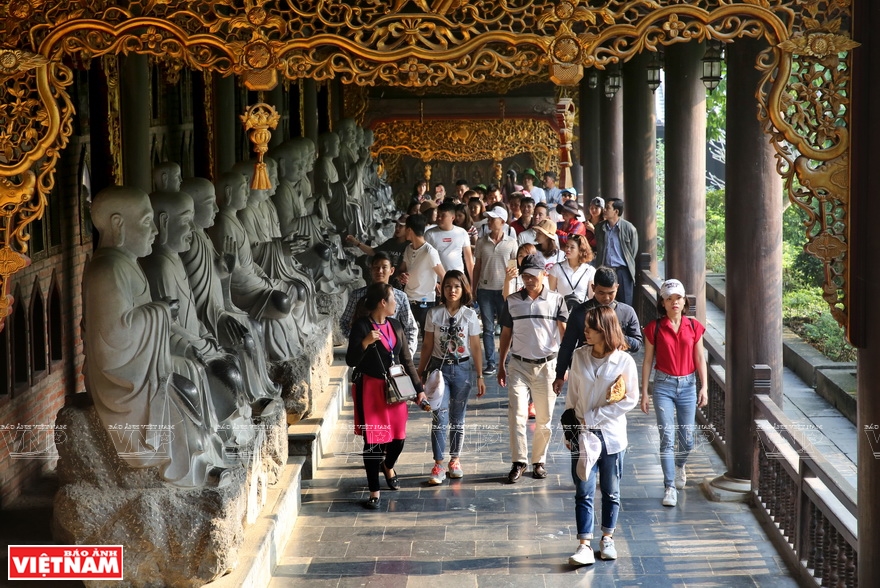 Bai Dinh pagoda has the longest corridor of Arhat statues in Asia. Photo: Tat Son / VNP 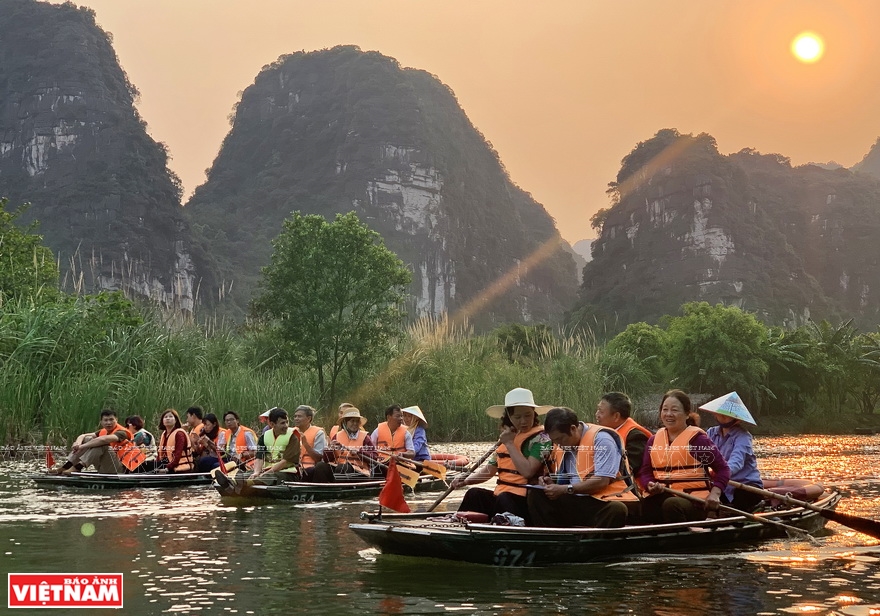 Sightseeing at Trang An world natural heritage. Photo: Tat Son / VNP |
In 2003, old Bai Dinh pagoda was upgraded by the Xuan Truong enterprise into a big pagoda complex on an area of over 100 hectares.
The upgraded pagoda, which still have the traditional traits of a Buddhist temple, is designed to create a tranquil space which is harmoniously surrounded by valleys, rock mountains, lakes and trees.
Located in the Trang An Landscape Complex, Bai Dinh pagoda hosted the United Nations Day of Vesak in 2008 and 2014, an event attended by thousands of representatives of Buddhist delegations from more than 100 countries all over the world./.
|
- Bai Dinh pagoda is the largest spiritual and cultural center in South East Asia. It has the largest gold-plated Buddhist statue, the longest corridor of Arhat statues and the highest Buddha relic tower in Asia. It also has the biggest brass statue of Maitreya in South East Asia. - The idea of connecting Huong, Tam Chuc and Bai Dinh pagodas in a spiritual tourism route was initiated and realized by the Vietnam National Administration of Tourism and Hanoi, and Ha Nam and Ninh Binh provinces. |
Story: Ngan Ha
Photos: Tat Son, Khanh Long
Photos: Tat Son, Khanh Long


